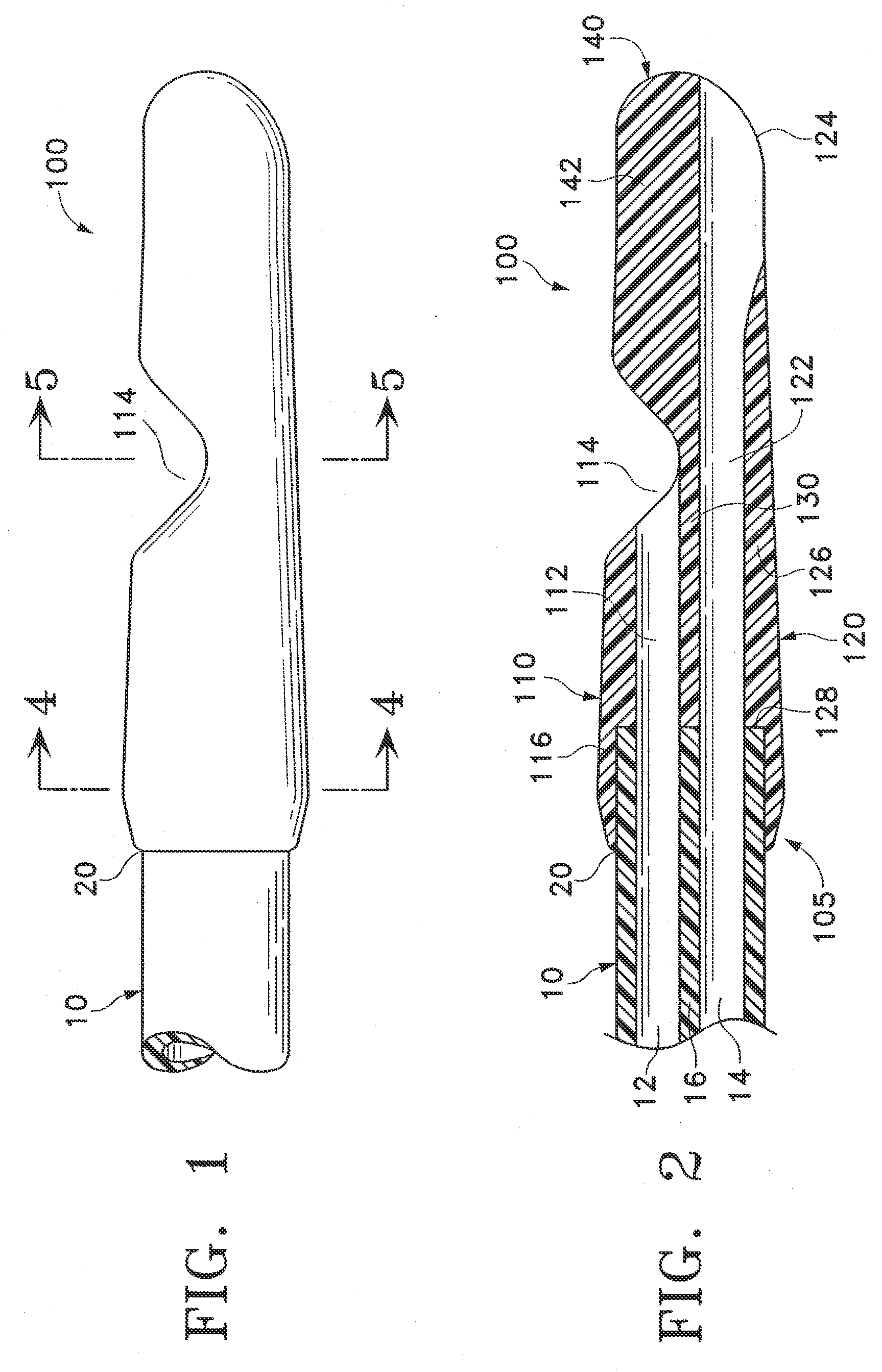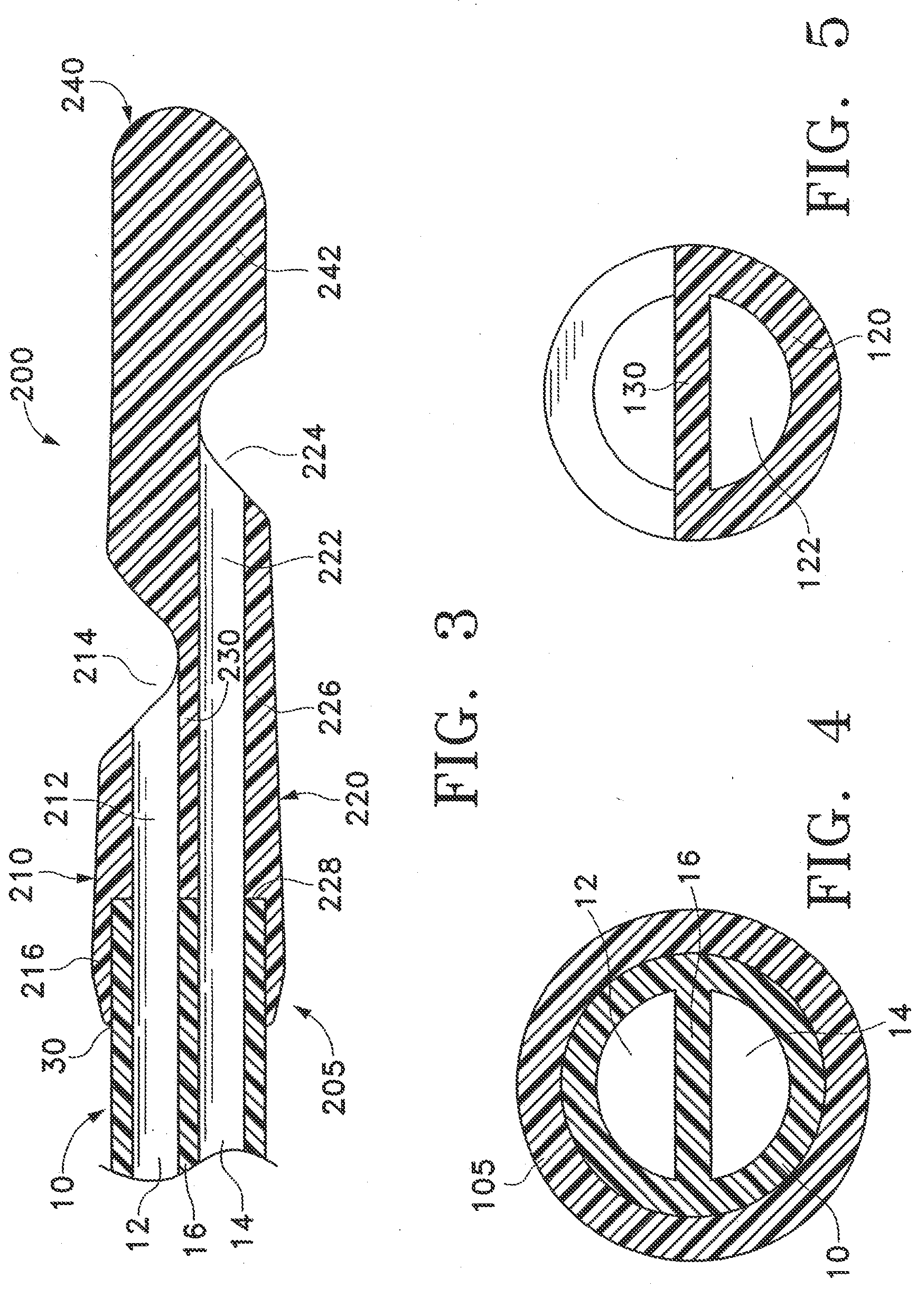Bolus tip design for a multi-lumen catheter
a multi-lumen catheter and catheter tip technology, applied in the field of medical devices, can solve the problems of clots around the outside surface of the catheter, trauma to the inside wall of the vein, and the opening may become partially or totally occluded, so as to prevent unnecessary trauma to the patient's vein
- Summary
- Abstract
- Description
- Claims
- Application Information
AI Technical Summary
Benefits of technology
Problems solved by technology
Method used
Image
Examples
Embodiment Construction
[0025]The present invention satisfies the need for an improved bolus tip design for use with multi-lumen catheters. More particularly, the present invention provides an atraumatic tip design that is efficient and effective in transporting fluids to and from a patient. In the detailed description that follows, it should be appreciated that like reference numerals are used to describe like elements illustrated in one or more of the figures.
[0026]Turning now to FIG. 1, a first embodiment of the present invention is illustrated. A side view of bolus tip 100 is shown coupled to catheter 10 at point 20. A bolus cavity 114 is located in a side of the bolus tip 100 for the entrance or exit of fluids therefrom. FIG. 2 more elaborately illustrates the inventive concepts of the first embodiment. The bolus tip 100 is oblong and rounded, with a U-shaped portion removed from the bolus tip 100, creating the bolus cavity 114. This U-shaped design is beneficial in that it prevents occlusions by prov...
PUM
| Property | Measurement | Unit |
|---|---|---|
| cross-sectional shapes | aaaaa | aaaaa |
| outer diameter | aaaaa | aaaaa |
| length | aaaaa | aaaaa |
Abstract
Description
Claims
Application Information
 Login to View More
Login to View More - R&D
- Intellectual Property
- Life Sciences
- Materials
- Tech Scout
- Unparalleled Data Quality
- Higher Quality Content
- 60% Fewer Hallucinations
Browse by: Latest US Patents, China's latest patents, Technical Efficacy Thesaurus, Application Domain, Technology Topic, Popular Technical Reports.
© 2025 PatSnap. All rights reserved.Legal|Privacy policy|Modern Slavery Act Transparency Statement|Sitemap|About US| Contact US: help@patsnap.com



